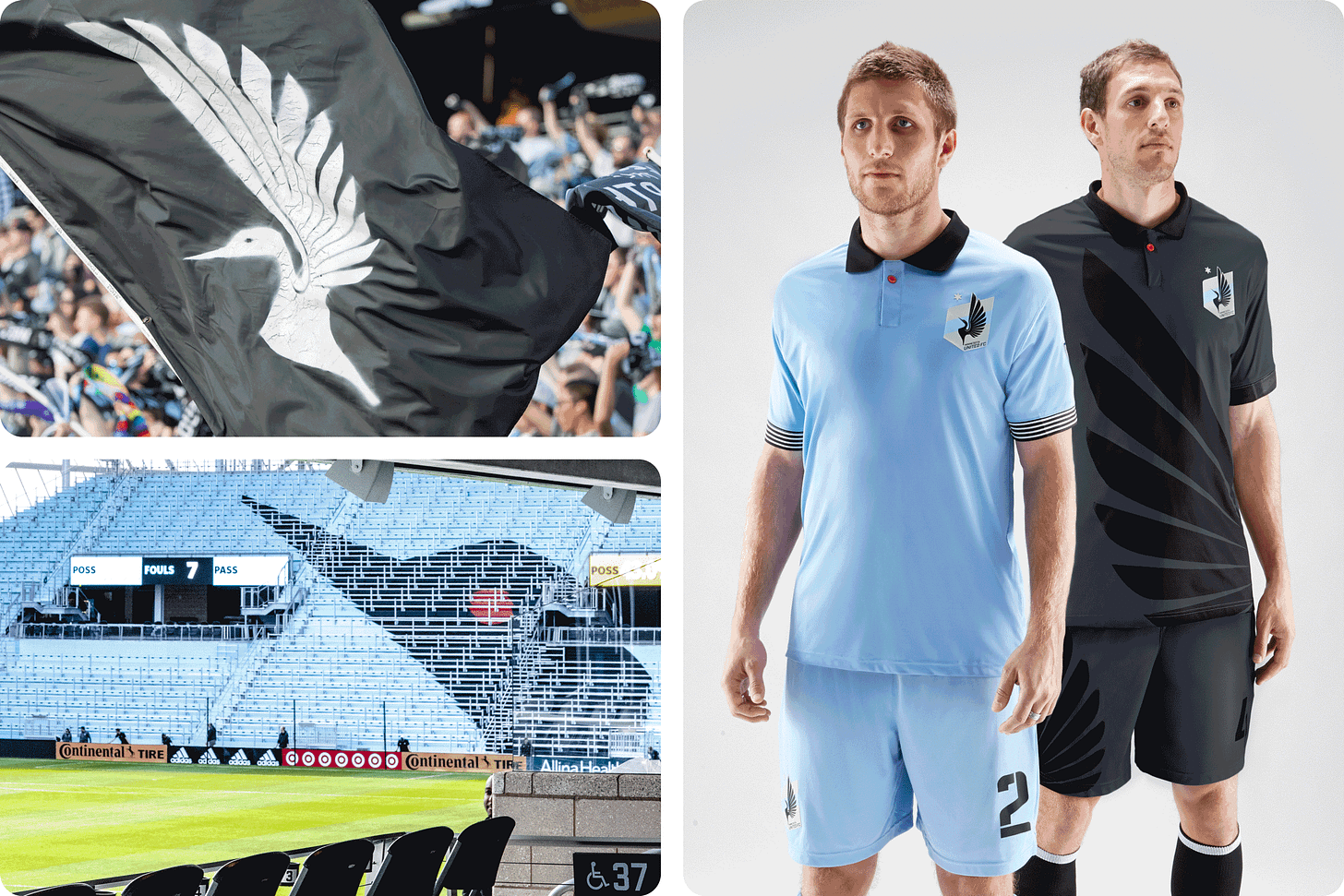How Zeus Jones Builds Meaning Into Brand Design
Here are the most common questions we're asked about brand identity.
There’s no silver bullet for designing a brand identity that people actually care about—even less so when it comes to sustaining coherence and resonance over time. And while the right formula is going to be different for every opportunity, there are some consistent themes we’ve uncovered in our own work.
In short, we believe brand design is about driving deeper meaning and relevance in your expression. Obviously that’s not a small task. To shed some light on the most common misconceptions we hear, we’ve put together a list of the burning questions we’re often asked about brand identities.
Where should I start if I’m launching a new brand?
Before jumping into any serious design work, it’s important to know your audience, have a vision for where you’re headed and a strategy for how to get there (assuming you’ve already figured out what core product or service your organization is going to offer). Don’t sweat it if you don’t have all of this figured out. A lot of our work starts with setting this foundation—without it, future brand building decisions wind up being reactive and feeling like an arbitrary paint job.
Once you have a clear understanding of who you are, looking at other brands in your category can help you zero in on the things about your brand that you can authentically lean into and stand out. By looking at the visual equities and ideas others are building their brands around, we can find the gaps and opportunities for you to step into—helping us get a picture for what kinds of core brand elements we should consider building.
What do I need for my brand to be successful?
All successful brand identities begin with a deep understanding of what your brand is all about, the associations you’re building and the larger ideas and narratives they ladder up to. On top of that foundation, your brand’s identity should be designed to react to the world—with the flexibility to come to life in ways that are just as recognizable as they are unexpected.

Many brand identities are still created under the assumption that the brand is a single, monolithic thing. But the meaning and function of a brand are no longer rigid and fixed—and the boundaries between brands and their fans are blurring. By having an identity that’s designed to flex and be reinterpreted, your brand can show up more authentically and connect with more people in more ways—welcoming them to make the brand their own and add new layers of meaning to it. This will look different for each brand’s unique set of fans, touchpoints, partners, and ways they participate in culture.

How do I know when it’s time to rebrand?
Business and cultural contexts are constantly changing, but there are times where the changes are so drastic that your current brand identity isn’t working like it used to. This could be because the rest of your category has caught up to you or because your company is going through big changes that you need to signal. Ultimately, if the world you imagine your brand exists in feels disconnected from your current identity it may be time to consider a rebrand.
There are varying degrees of what’s considered a “rebrand”—depending on how much of your existing brand identity you want to change. Regardless, don’t assume everything about your brand should be taken down to the studs. It’s important to do an audit and see what’s working, what’s holding you back, and what might be missing. If your existing brand is still working but has become too bloated and unmanageable, then a full rebrand might not be needed.

We've also seen a lot of brands that have the opposite problem—they don't have enough assets or tools within their existing identity to flex and show up in ways they need to across their different touchpoints and contexts. For these clients, our work can certainly include a new name or logo, but often focuses more on building out a suite of new assets that evolve the brand and give them more visual equities and associations to build the brand around.

Our identity feels a little stale, but we aren’t ready to change our logo. What should we do?
While your logo is certainly the most visible expression of your brand, it isn’t your entire brand identity. Your identity needs to set you apart from your competitors, deliver on your brand purpose, resonate with your audiences, and connect with culture at large. No logo does that. So if a logo or name change isn’t on the table, don’t fret! A brand refresh keeps the elements of your identity that have the most equity like your name, logo, and core color palette the same while still tightening up and strengthening the rest of your identity. Or if your existing identity isn’t robust enough for your brand to show up in the ways it needs to, a brand extension would build out a suite of new assets that evolve the brand and give you more to work with.

If working on your brand identity isn’t on the table, we’ve found a lot of success with identifying experience design projects that sit a bit further downstream. By focusing on modernizing one of your brand’s key touchpoints, we can still move the brand forward and build meaning and value without changing any of the core identity.

People already love our brand, but how do we make sure it stays relevant and coherent?
As with everything, maintaining relevance and coherence over time all comes down to your strategy and execution. Having a powerful idea that’s at the center of your brand isn’t going to resonate if people can’t actually feel it. We’ve worked with more than a few brand teams who didn’t have a shared vision for the ideas and narratives behind their brand—with no clarity on what was iconic about their brand or how to amplify the ways people are interacting with the brand and making it their own.
Much of our work for Chipotle (in addition to branding and launching Chipotle Rewards, creating Chipotle Goods, and helping launch their first mobile and contactless order experience) has focused on creating an overarching strategy that sets the tone for all their different agencies and executional partners to collectively move the brand in the same direction. That way all the incredible work that was happening across social, in-store, campaigns, and digital all felt connected. It’s important to call out that the goal is cohesion, not uniformity. Everyone should be working with shared set of ideas and associations that are picked up, reinterpreted, and then woven together to create something more powerful than the sum of its parts. Our work over the last 6+ years has helped streamline their identity—empowering their fans and partners to take the brand to new places that mean more.

How should my brand’s identity be enforced?
Unfortunately the approach most brands take to “brand standardization” is steeped in an outmoded understanding of what a brand is and where its power comes from. Obviously there are legal considerations that need to be taken into account, but what we’re going to focus on here is what’s in the best interest for the brand from a cultural and creative perspective.
If you view your brand’s identity as a perfected thing that needs to be consistently replicated as many times as possible out in the world, then your brand actually will only weaken over time. The power of your brand comes from how sticky its underlying ideas are that people connect with, the ways they participate in moving those ideas forward, and how well your brand can reciprocate in real time—not in how well you can control the brand.
What we’re talking about is a more decentralized and democratized approach to building meaning into your brand. Because of this, a brand’s identity must have a degree of plasticity to it that allows it to be reinterpreted as you engage fans, partners, and culture at large (or as they engage with you!). Trying to overly control that dynamic actually actually limits your brands potential. This is why—from a brand relevance perspective—MSCHF’s absurd knockoffs and parodies of Nikes, Timbs, and Vans are actually a net positive for those brands. Even through the irony and underlying gags, these reinterpretations of iconic symbols actually further cements the status of these brands and extends their cultural power. Much like Virgil’s quotations and deconstructions of Nike’s icons did for the footwear juggernaut.
Today the brands who win are the ones who are the most shareable—and not in the social media sense of the word (though that’s certainly an aspect of it). Brands are inherently associative. Their value comes from the fragments of ideas and meaning that people associate with you. This is what prompts us to choose one brand over another, share a brand with our friends, or participate in the bigger stories and ideas that a brand is championing.
Does your team have brand identity questions? Let’s talk.








